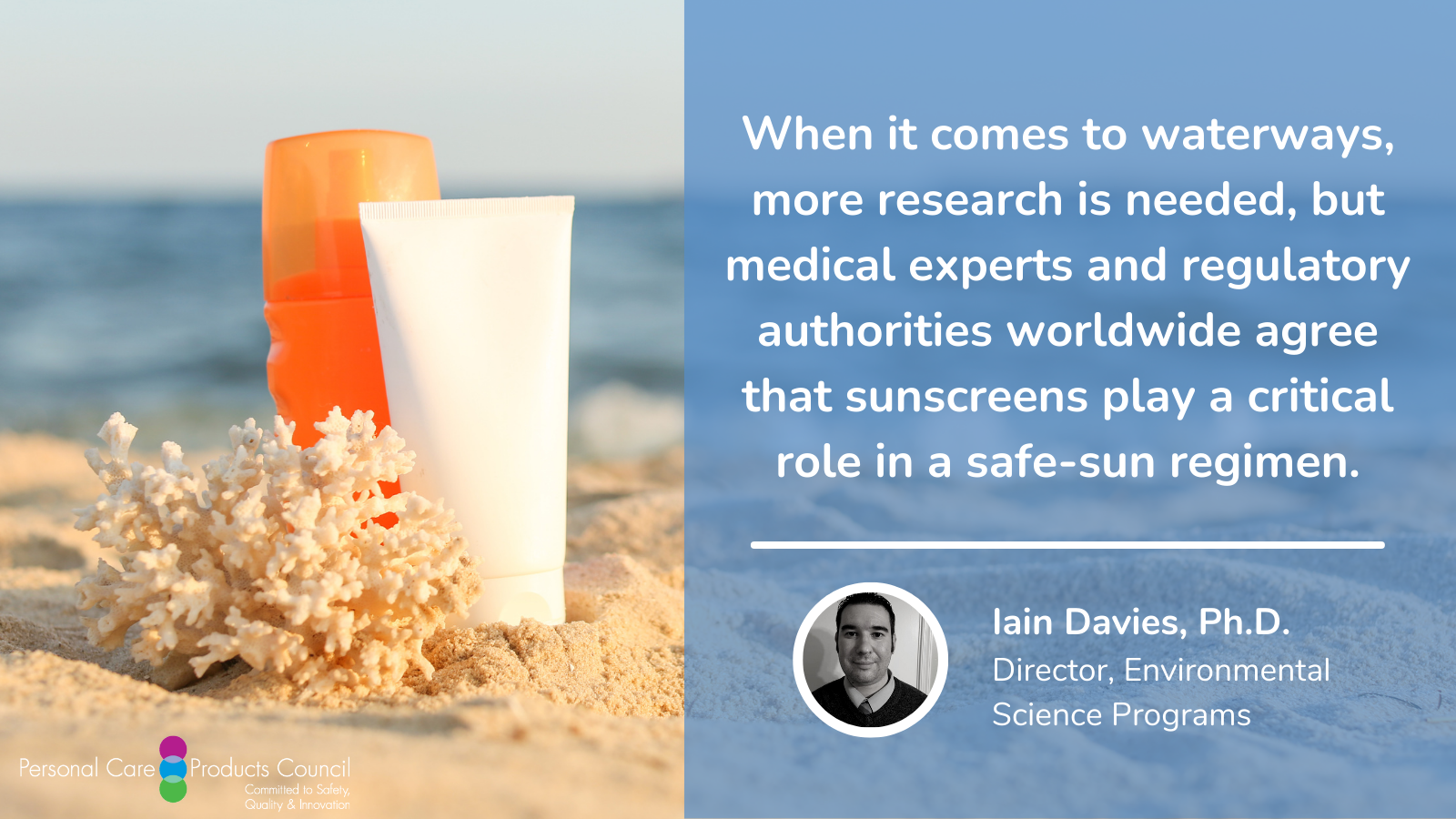Sunscreens, Waterways and Science – What We Know
By Iain Davies, Ph.D.
Director of Environmental Science Programs, PCPC
While sunscreens may not be top of mind as the weather turns cooler, sunscreens are a critical tool in a daily regimen, year-round. Last month, the National Academy of Sciences (NAS) released an important report about the environmental impact of currently marketed sunscreens and the potential human impacts of changes in sunscreen usage. The report noted sunscreens’ public health benefits and provided much-needed perspective on the current state of scientific knowledge related to sunscreens, specifically ultraviolet (UV) filters.
UV filters are essential ingredients used in sunscreens to absorb, scatter or reflect the UV radiation, protecting the skin from excessive sun exposure. By filtering out harmful UV rays, sunscreens help to reduce the risk of skin cancer, sunburn and premature skin aging.
Many people use sunscreens when they are enjoying time outdoors, including in rivers, lakes or oceans. The NAS report sought to address the potential impact on aquatic life if UV filters are present in water systems, as well as the efficacy of sunscreens in preventing UV damage to human skin and the potential health impacts. Sunscreen ingredients also rinse off when people are bathing or showering, entering the wastewater system and potentially being discharged into bodies of water.
The report summarizes the findings of a multidisciplinary expert panel that reviewed the available science. In short, the study found that there is currently insufficient relevant and reliable scientific data to conduct a realistic environmental risk assessment. Additionally, there is not enough scientific data to support UV filter bans that some U.S. states and other parts of the world have implemented.
Importantly, the report put forward three broad recommendations to address the information gaps:
- The U.S. Environmental Protection Agency should conduct an ecological risk assessment (ERA) for all currently marketed UV filters and any new ones that become available.
- Government agencies, together with sunscreen formulators and UV filter manufacturers, should conduct and disseminate comprehensive research on multiple aspects of UV filters and their impact on aquatic environment.
- Epidemiological risk modeling and behavioral studies related to sunscreen usage should be conducted to better understand human health outcomes from changing availability and usage.
While the report confirmed what PCPC’s scientists have long concluded – insufficient environmental safety data have been used to justify sunscreen bans or changes in consumer behavior – NAS further acknowledges that changes in consumer sunscreen use could lead to significant adverse public health impacts of increased UV-induced skin cancers. Medical experts and regulatory authorities worldwide agree that sunscreens play a critical role in a safe-sun regimen and nothing in the report changes that recommendation.

PCPC and our member companies welcome the opportunity to work with federal agencies and other interested stakeholders to fill in some of the scientific information gaps as they relate to UV filters’ impact to aquatic environments. We are committed to conducting the innovative and cutting-edge environmental research needed to not only assess potential environmental risks but to also address consumer questions and maintain consumer trust in products that help protect their skin every day.
For more information on sunscreens and other beauty and personal care products, visit www.cosmeticsinfo.org.
